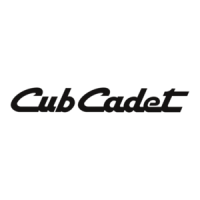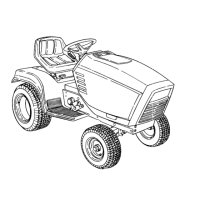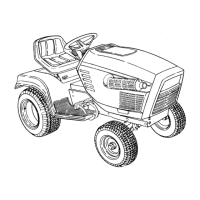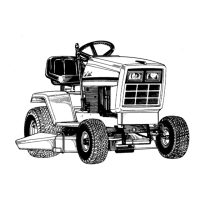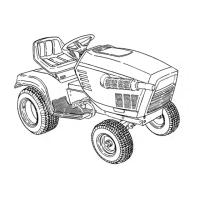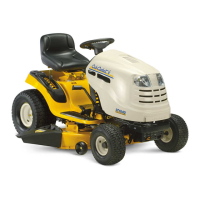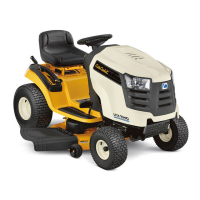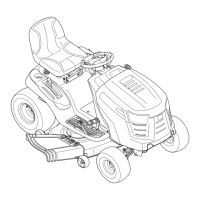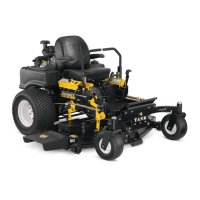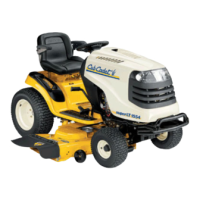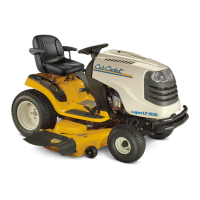3
SAFE OPERATION PRACTICES
Unpacking
35. When looking for oil leaks, never run your hand over hydraulic hoses, lines or fittings. Never tighten
or adjust hydraulic hoses, lines or fittings while the system is under pressure. If high-pressure oil
penetrates the skin seek immediate medical attention or gangrene and permanent damage may
result. Do not check for hydraulic leaks with your hands, use paper or cardboard instead. Wear gloves
and safety glasses when checking for leaks.
36. Do not operate mowers that have been damaged or have not been properly maintained. If the
mower has been damaged, then have it repaired.
37. When operating this mower in the forward direction, do not allow the speed control levers to
return to the neutral position on their own. Always operate them smoothly and avoid any sudden
movements of the levers when starting or stopping.
38. If situations occur which are not covered in this manual use care and good judgement. Contact your
customer service representative for assistance.
Slope Operation
• Slopes are a major factor related to loss of control and tip-over accidents that can result in severe
injury or death. All slopes require extra caution. If you cannot back up the slope or if you feel uneasy
on it, do not mow it or drive on the slope.
• For your safety, use the slope gauge included as part of this manual to measure slopes before
operating this mower on a sloped or hilly area. If the slope is greater than 15 degrees as shown on the
slope gauge, do not operate this mower on that area or serious injury could result.
Do:
1. Mow across slopes, not up and down. Exercise extreme caution when changing direction on slopes.
2. Watch for holes, ruts, bumps, rocks, or other hidden objects. Uneven terrain could overturn the
mower. Tall grass can hide obstacles.
3. Use slow speed. Choose a low enough speed so that you will not have to stop while on the slope.
Avoid starting or stopping on a slope. If the tires are unable to maintain traction, disengage the
blades and proceed slowly and carefully straight down the slope.
4. Keep all movements on the slopes slow and gradual. Do not make sudden changes in speed
or direction. Rapid acceleration could cause the front of the mower to lift and rapidly flip over
backwards, which could cause serious injury or death.
5. Follow the manufacturer’s recommendations for wheel weights or counterweights to improve
stability.
6. Use extra care with grass catchers or other attachments. These can change the stability of the
mower.
Do Not:
1. Do not turn on slopes unless necessary; then turn slowly uphill and use extra care while turning.
2. Do not mow near drop-offs, ditches or embankments. The mower could suddenly turn over if a wheel is
over the edge of a cliff, ditch, or if an edge caves in.
3. Do not operate on slopes or near the edge of water such as a lake, pond, river or stream where the
mower could slip, tip or roll-over into the water.
4. Do not try to stabilize the mower by putting your foot on the ground.
5. Do not use a grass catcher on slopes steeper than 15 degrees.
6. Do not mow on wet grass. Reduced traction could cause sliding and/or loss of control.
Children
1. Tragic accidents can occur if the operator is not alert to the presence of children. Children are often
attracted to the mower and the mowing activity. They do not understand the dangers. Never assume
that children will remain where you last saw them.
a. Keep children out of the mowing area and in watchful care of a responsible adult other than the
operator.
b. Be alert and turn mower off if a child enters the area.
c. Always look behind and down for small children. Use slow speed.
d. Never carry children, even with the blade(s) shut off. They may fall off and be seriously injured or
interfere with safe mower operation.
e. Use extreme care when approaching blind corners, doorways, shrubs, trees or other objects that
may block your vision of a child who may run into the path of the mower.
f. To avoid back-over accidents, always disengage blades before traveling in reverse.
g. Keep children away from hot or running engines. They can suffer burns from a hot muffler.
h. Remove key when mower is unattended to prevent unauthorized operation.
2. Never allow children under 16 years of age to operate this mower. Children 16 and over should read
and understand the instructions and safe operation practices in this manual and on the mower and
should be trained and supervised by an adult.
Transporting Mowers
1. This mower is not intended for use on public roads. Mowers operated on public roads must comply
with state & local ordinances, SAE J137, and ANSI/ASABE S279 (lighting and marking requirements).
2. Use care when loading or unloading mowers onto trailers.
3. If ramps are used, they must be full width, stable, have an adequate capacity rating and be secured
to the trailer. Ramp angle should not exceed 15 degrees and trailer should be parked on level terrain.
4. Mowers must be secured onto trailers with straps, chains, cables, ropes, or other means deemed
adequate for that purpose. The front and rear of the mowers must be secured to the trailer in both
the lateral and vertical directions.
5. Inspect the mower on a regular basis for damage and improper operation. Replace all components
that are damaged or are not functioning properly with authorized replacement parts.
Hydraulic Devices & Systems
• Hydraulic fluid escaping under pressure may have sufficient force to penetrate skin and cause serious
injury. If foreign fluid is injected into the skin or eyes, see immediate medical attention or gangrene
and permanent damage may result.
WARNING
Keep body and hands away from pinholes or nozzles that could inject hydraulic fluid under
high pressure. Use paper or cardboard, not your hands, to search for leaks! Wear gloves and
safety glasses.
• Safely relieve all pressure in the system before performing any work on the system, and make sure
that:
• The ignition switch is OFF.
• The key is removed.
• The engine spark plug wire(s) removed.
• All connections to the negative terminal of the battery are removed.
• The park brake is set.
• All by-pass valves, if so equipped, are open.
• Hydraulic controls are actuated to release pressure on pumps, cylinders, etc. If “float” positions are
available, they should be used.
• After the above operations are completed, it should be safe to begin disconnecting the lines or
components. It is still a good idea to cover the connection with a cloth shield and then gently loosen
connections.
WARNING
Make sure all hydraulic fluid connections are tight and all hydraulic hoses and lines are in
good condition before applying pressure to the system.
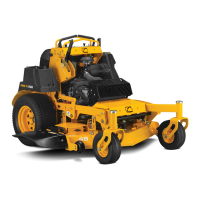
